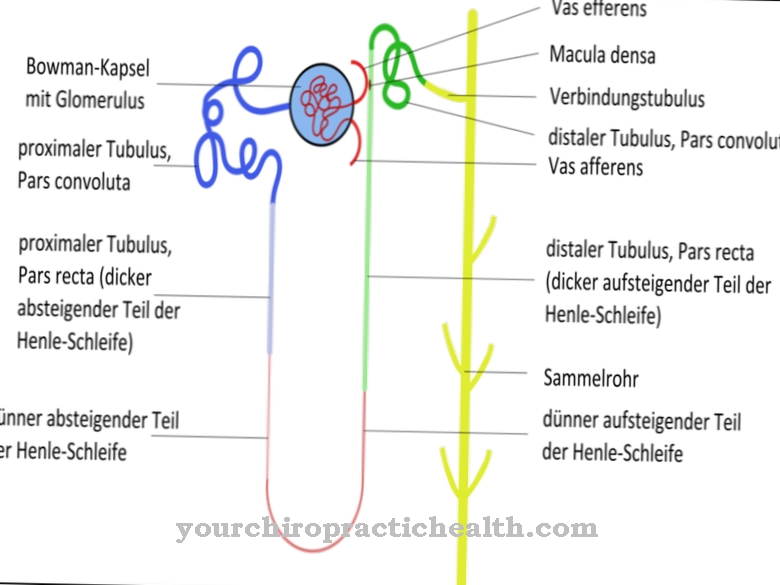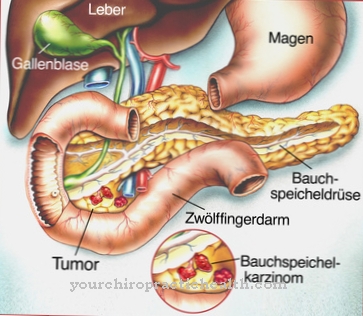The human nervous system processes the sensory impressions received by the sense organs. Topographically, it is in the central nervous system (CNS) and that peripheral nervous system (PNS) divided. The following is an overview of the structure and function as well as possible diseases of the peripheral nervous system.
What is the Peripheral Nervous System?
The peripheral nervous system is made up of those parts of the nervous system that lie outside the brain and spinal cord (the CNS).
It connects the brain with the periphery of the body and thus acts as a supply and execution organ of the central nervous system. Functionally, the two systems cannot be separated.
The interaction of the central and peripheral nervous system controls the processing of stimuli as well as muscle and glandular activity in the body. The PNS consists mainly of nerve cell processes (axons), which are surrounded by glial cells.
Anatomy & structure
The nerves, also called neurons, are the “lines” that connect the peripheral with the central nervous system. Nerves are made up of bundled nerve fibers. These in turn are made up of nerve cell extensions and glial cells. Glial cells are ten times more numerous in nerve tissue than nerve cells. In the PNS, these include the Schwann cells (which form the myelin sheaths) and the mantle cells (which cover the cell bodies of peripheral neurons).
in the peripheral nervous system A distinction must be made between two types of nerves: The cranial nerves (Nn. craniales) are connected to the brain. The spinal nerves (Nn. Spinales), however, are connected to the spinal cord. There are 12 pairs of cranial nerves and 31-33 pairs of spinal nerves. In addition, there are afferent (Latin afferens = leading) and efferent (Latin efferens = leading away) neurons. The PNS is further divided into the somatic (voluntary) and vegetative (autonomous) nervous system.
The autonomic nervous system can in turn be subdivided into the areas of the sympathetic, parasympathetic and enteric nervous system. In addition to the cranial and spinal nerves, other autonomic nerves of the autonomic nervous system as well as sensory and motor ganglia exist in the PNS. The cell bodies (perikarya) belonging to the axons are located either in the CNS or in the ganglia of the PNS.
Functions & tasks
The peripheral nervous system There are central tasks in the perception of sensory signals from the environment as well as the involuntary and voluntary motor skills.
The sensory impressions recorded by the receptors are passed on to the CNS by the afferent (sensory) neurons. Efferent (motor) neurons forward the commands from the CNS via the axons to the effector organs and thus trigger their movement. Effector organs are, for example, the skeletal muscles or the smooth muscles of the intestines. The somatic system is responsible for the voluntary, i.e. consciously controlled, movement of the muscles.
The vegetative system mostly unconsciously controls the function of the vital internal organs, for example breathing or digestion. Afferent or efferent neurons, which are part of the somatic nervous system, are also called somatoafferent or -efferent. If they belong to the autonomic nervous system, they are referred to as viszeroafferent or -efferent.
Illnesses, ailments & disorders
Diseases of peripheral nervous system can manifest themselves through various symptoms. Possible nerve lesions of the PNS are roughly divided into radicular lesions, plexus lesions and (poly- and mono-) neuropathies.
Nerve lesions can be the trigger for herniated discs (radicular lesion) or various symptoms of paralysis (paresis) in the body. Sensory disorders, such as impairment of the sense of touch, can also be caused by a disorder of the PNS. In the chest, neck and lumbar area there are bundled nerve roots (plexus) that are divided into different nerves. Severing a peripheral nerve can paralyze one of the muscles in that area.
Each peripheral nerve is responsible for a narrowly defined body region or function. The disease of a single peripheral nerve (mononeuropathy) can therefore lead to sensory or motor deficits in the body region concerned. There are a variety of underlying conditions that can damage a single nerve. For example, the diabetes mellitus or some diseases related to rheumatism are associated with neuropathies because they often cause circulatory disorders.
Nerve inflammation can also be triggered by a herpes zoster infection (through initial infection with the varicella zoster virus). This disease, also known as shingles, is often associated with severe nerve pain.
You can find your medication here
➔ Medicines for paresthesia and circulatory disordersTypical & common nerve diseases
- Nerve pain
- Inflammation of the nerves
- Polyneuropathy
- epilepsy





.jpg)


















.jpg)



